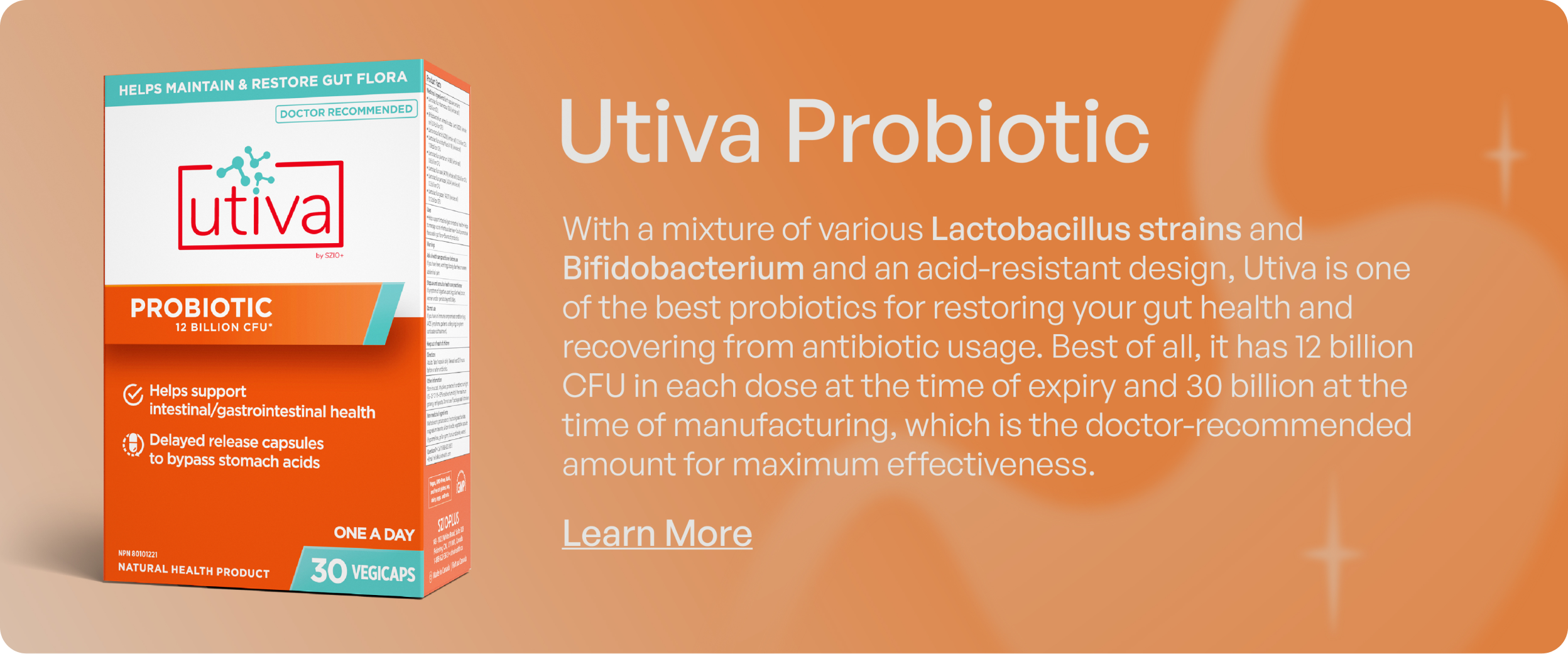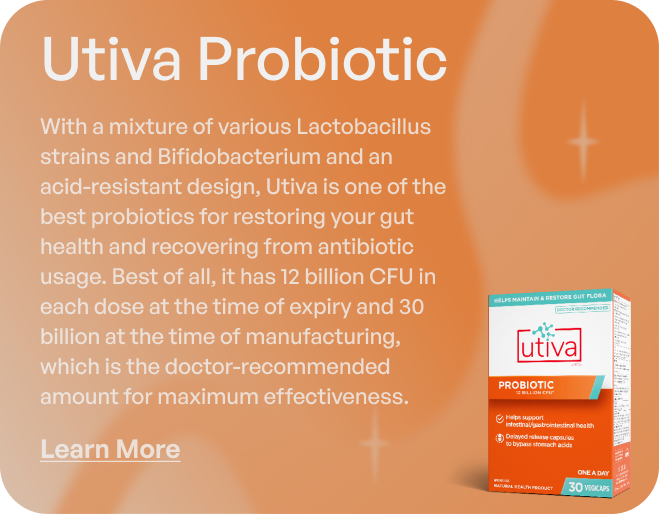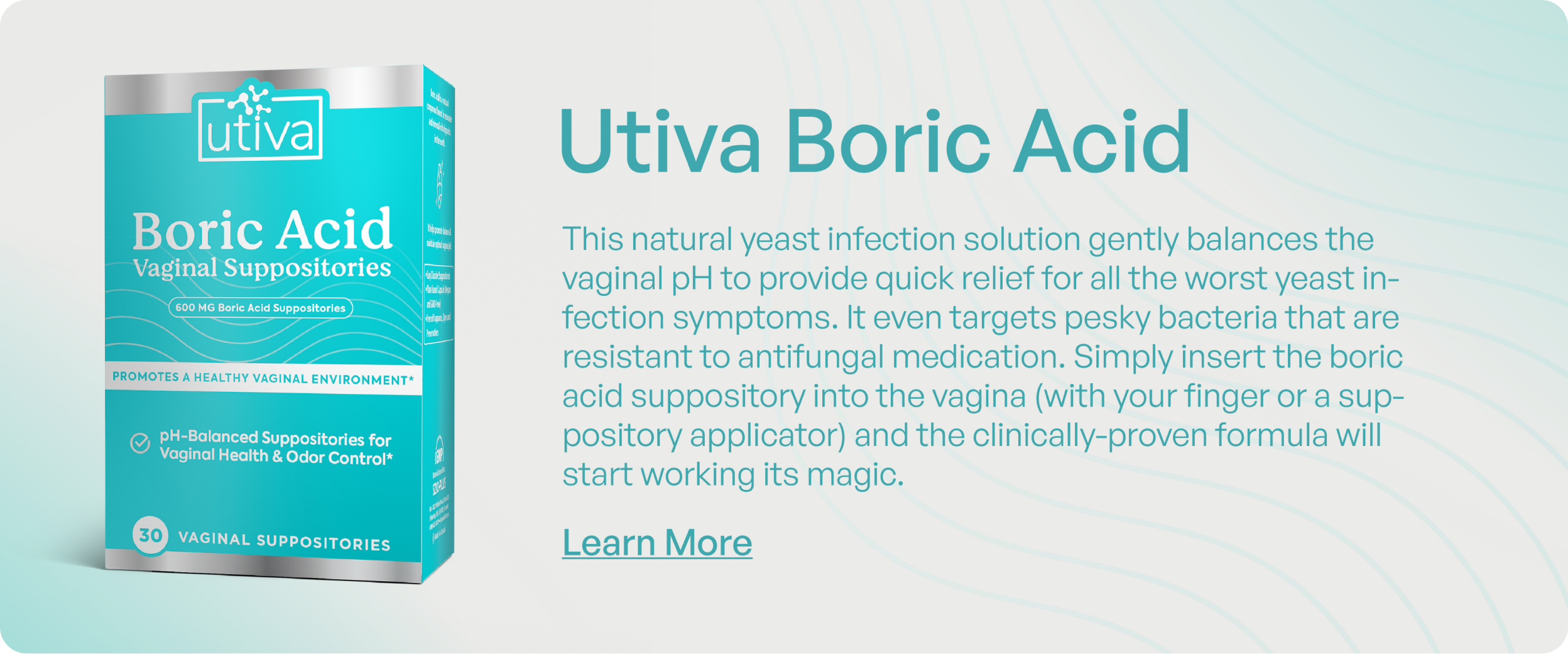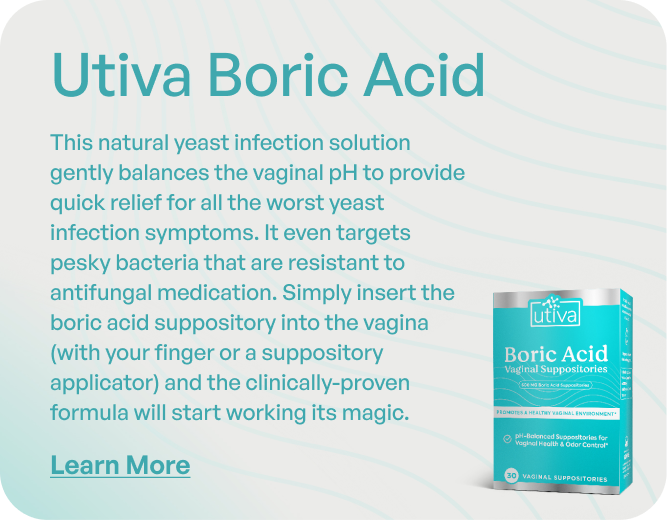The Gut-Vagina Connection: How to Boost Vaginal Health Through a Balanced Gut

Microbiome has become a bit of a buzzword. Most of us know about our gut microbiome and how important it is to take care of it. But there’s a lot more to the story than that—and your gut isn’t the only main character.
You actually have distinct microbiomes all over your body, specifically anywhere that is exposed to the outside world. That means your gut, skin, eyes, mouth, nose, and—of course—your vagina. These microbiomes are like bacteria communities that coexist and sometimes even cross over. Especially when it comes to your gut and vaginal microbiome, researchers are discovering.
So how exactly are your gut and vaginal microbiome connected? And how can balancing both improve your health? Let’s take a look under the microscope.
How does your body’s microbiome work?
Your body’s microbiome consists of trillions of microbes—AKA bacteria, viruses, and fungi. Some microbes are bad for you. Other microbes are necessary for a healthy heart, immune system, brain function, disease prevention, and more.
A healthy microbiome is all about balance. As long as the bad bacteria don’t outnumber the good guys, your microbiome should be able to do its job. But if there’s an imbalance between good and bad microbes, it can result in health complications.

What’s the purpose of your gut microbiome?
The gut microbiome (sometimes called the gut flora) consists of all the microbes found in a part of your large intestine called the cecum. But the most important microbe to talk about here is bacteria. Why? Because there are at least 1,000 species of bacteria in your gut microbiome alone—and they all have a specific job to do.
Many scientists consider the gut as its own organ—full of living, moving pieces that all serve a purpose. Your gut is responsible for controlling digestion, boosting immune function, regulating your mental health, preventing disease, and maintaining your overall health. And the more diverse your gut microbiome is, the better it is at doing all of the above.
What’s the purpose of your vaginal microbiome?
Your vaginal microbiome is an entire ecosystem inside your vagina—home to hundreds of microorganisms. There are over 500 types of bacteria in the vaginal flora alone, some good and some bad, all living in harmony.
The vaginal microbiome is like your internal bodyguard. It protects your vagina from invaders that could cause infection or disease, like sexually transmitted diseases (STDs). It also stops the growth of harmful bacteria and yeast, protecting you from conditions like bacterial vaginosis (BV), yeast infections, and urinary tract infections (UTIs).
How are the gut and vagina connected?
Over the years, researchers have studied the importance of your gut microbiome in supporting the rest of your body. They discovered that the gut can especially have an impact on your vaginal health—also known as the gut-vagina axis. But how?
First off, poor gut health causes inflammation all over your body, including your vagina. Inflammation can disrupt the bacteria balance and increase your risk of developing BV or other infections.
Your gut microbiome can also act as a cozy place for bacteria that disrupt your vaginal microbiome to hang out and grow stronger. From there, they can travel down to your vagina and cause infections like UTIs.
Lastly, a healthy gut can actually increase your estrogen levels. Your liver is in charge of deciding which estrogen molecules to keep and which to remove. But certain bacteria in the gut microbiome have the power to change the molecule’s fate and keep it around a little longer.
What does estrogen have to do with the vagina? Your vaginal microbiome loves estrogen because it stimulates the growth of Lactobacillus—a healthy hormone that produces lactic acid and lowers the vaginal pH, helping other good bacteria thrive. So the more estrogen circulating throughout your body, the healthier your vagina will be.
How can you keep the gut and vaginal microbiome balanced?
There are so many ways to boost your gut and vaginal health at the same time. Here are a few top tips to get you started:
- Eat a balanced, diverse diet with lots of fruits and vegetables. This makes for a more diverse (and healthy) gut microbiome.
- Take a daily probiotic supplement that contains Lactobacillus. A probiotic for gut and vaginal health can balance the microbiome in both areas.
- Add fermented foods to your meals. They all contain healthy bacteria that overpower the bad bacteria in the microbiome. Think: yogurt, kefir, kimchi, and sauerkraut.
- Avoid soap and douching. Your vagina naturally cleans itself, so introducing external cleansers can disrupt the natural balance of the vaginal microbiome.
- Find ways to relieve stress. Yoga, meditation, breathwork, exercise, your favourite TV show. Prioritize whatever soothes your mind and lowers your stress levels. Stress can stimulate bad bacteria and make it harder for the microbiome to balance.
- Pee after sex. This flushes out any new bacteria that has just been introduced to your urethra or vagina.
- Eat whole grains and plant-based as much as possible. They can reduce the risks associated with an unhealthy gut, soothe inflammation, lower cholesterol, and fight bad bacteria like E. coli—the leading cause of UTIs.
- Take a Boric Acid supplement for yeast infections. Boric acid is clinically proven to restore the pH balance in your vagina and target bad bacteria, like Candida.
When in doubt, always talk to your doctor about your symptoms, how to test for bacteria imbalances, and what supplements or treatment plans might be right for you.
What are the best supplements to balance your gut and vaginal flora?
References:
- https://www.ncbi.nlm.nih.gov/pmc/articles/PMC7511578/
- https://www.frontiersin.org/articles/10.3389/fsysb.2022.951403/full
- https://www.sciencedirect.com/science/article/pii/S2452231718300277
- https://www.frontiersin.org/articles/10.3389/frph.2022.992176/full
- https://pubmed.ncbi.nlm.nih.gov/34120200/
- https://www.cell.com/trends/endocrinology-metabolism/fulltext/S1043-2760(21)00114-4
Knowledge is power
Sign up to our newsletter to keep learning!

- Choosing a selection results in a full page refresh.
- Opens in a new window.






